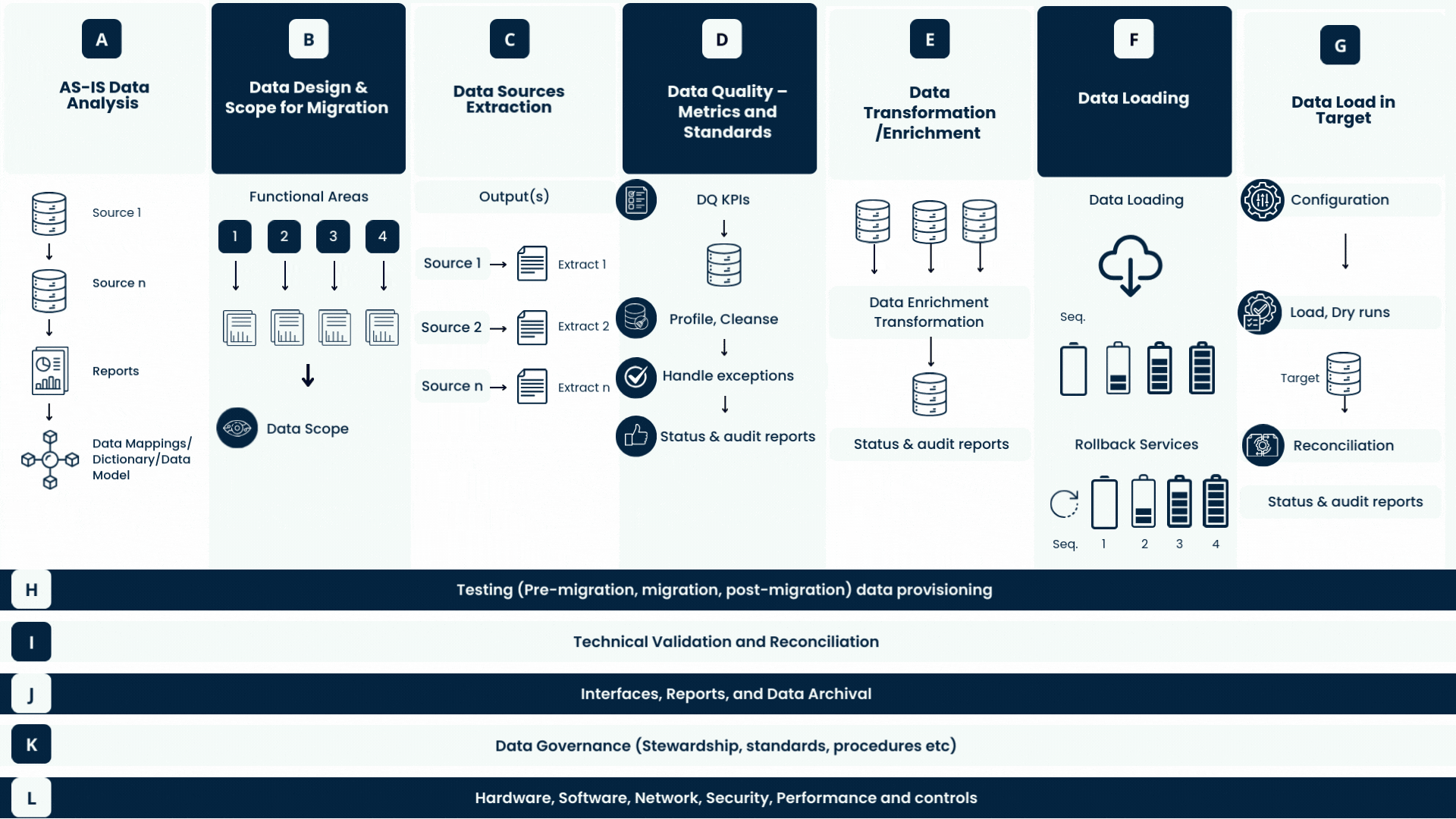Data Migration Best Practices 2024: A Comprehensive Step-by-Step Guide for Businesses
In today’s rapidly evolving business landscape, data migration is a critical process for organizations looking to modernize their IT infrastructure, improve efficiency, and adapt to changing needs. This comprehensive guide explores the various aspects of data migration, providing practical insights and best practices drawn from industry standards.
Understanding Data Migration: Processes, Challenges, and Solutions
Data migration involves selecting, preparing, extracting, transforming, and permanently transferring data from one computer storage system to another. This complex undertaking is driven by a mix of internal and external factors, including:
- Migrating from outdated legacy systems to new, modernized platforms.
- Integrating systems following mergers and acquisitions (M&A) activities.
- Transitioning from on-premise infrastructure to cloud-based solutions.
- Carving out systems during divestitures.
Data migration can be challenging, involving risks related to data quality, transformation, and integration. However, following a structured approach ensures a smoother transition and better results.
Jump to: The Data Migration Review Approach | Key Components | Best Practices | Client Commitment | FAQs
The Data Migration Review Approach: Five Key Steps for Business Success
To achieve a successful data migration, a structured method is essential. The Data Migration Review Approach offers a pragmatic, five-step process that includes:
- Structured Assessment Areas: Develop a comprehensive questionnaire covering all aspects of data migration to ensure thorough analysis.
- Conduct Interviews: Engage with client management and internal customers to determine the current state of data migration practices.
- Define Aspiration Level for Target State: Establish goals for the desired future state, based on overall strategy and assessment findings.
- Prioritize Next Actions: Analyze the gap between current and target states to determine areas that require immediate improvement.
- Create Implementation Roadmap: Develop a detailed plan to implement recommendations and actions, ensuring a clear path to success.
Key Components of a Successful Data Migration Process
The data migration framework identifies several critical steps to ensure the migration process runs smoothly:
- Data Sources Initial Extract: Prepare source databases for data extraction, including integration and downtime planning.
- Data Quality Assessment: Profile data without coding to assess quality and manage data lineage.
- Data Cleansing: Cleanse and format data using mature ETL tools or database native services to ensure consistency.
- Data Transformation/Replenishment: Perform necessary transformations on extracted data from source systems to align with the new target environment.
- Data Loading/Rollback Services: Implement robust processes for data loading into the target system, along with rollback capabilities in case of issues.
- Data Load in Target: Ensure successful and predictable data loading into the target system, verifying data integrity.
- Maintenance: Establish comprehensive services for data backups, monitoring, and archival to maintain data reliability.
Data Migration Best Practices to Ensure Success
Seamless data migration requires the implementation of industry best practices to manage complexities effectively:
- Maintain Version-Controlled Extracts: Keep version-controlled extracts of data to avoid ambiguity during the migration process.
- Use Data Profiling Tools for Quality Assurance: Utilize data profiling tools to ensure data quality and maintain data lineage integrity.
- Business-Validated Data Cleansing: Cleanse data only after business validation of profiled results to maintain accuracy.
- Automate Data Migration Processes: Automate data extraction, transformation, and loading to minimize human errors and ensure efficiency.
- Link Testing Infrastructure to Entry and Exit Criteria: Define testing entry and exit criteria to ensure all migration steps are verified properly.
- Automate Reconciliation Processes: Use automation to perform technical and business reconciliation at each stage of the migration.
- Unified Scheduling for Efficiency: Use a unified scheduler for all migration tasks to ensure efficiency and prevent scheduling conflicts.
- Network Testing and Monitoring: Perform thorough network testing and monitoring to identify latency issues and security vulnerabilities, ensuring seamless data transfers.
Client Commitment for a Successful Data Migration Project
Collaboration between the migration team and the client is crucial to ensure success. Key stakeholders should include:
- Executive Sponsor
- Chief Business Architect
- Chief Data Officer/Architect
- Project Governance Board
- Business Roles (e.g., Data Stewards, Data Owners, Business Process Owners)
- Technical Roles (e.g., Solution Architects, Data Architects, Infrastructure Architects)
Ensuring that key stakeholders are actively involved and have access to relevant documentation and artifacts is key to driving success in the data migration journey.
Conclusion: Achieving Seamless Data Migration for Business Growth
Data migration is a complex but essential process for organizations looking to evolve their data management strategies. By following a structured approach, focusing on key components, and implementing best practices, businesses can achieve seamless data migrations that support their growth and innovation goals.
For more insights and a detailed consultation, visit DataMigration.AI to learn how we can support your data migration needs.
FAQs about Data Migration
- What is Data Migration?
- Data migration involves transferring data from one storage system to another, often for reasons such as upgrading technology or consolidating systems.
- What are Common Challenges in Data Migration?
- Data quality, system integration, and potential downtime are common challenges that must be addressed with a structured migration approach.
- How Do You Ensure Data Quality During Migration?
- Implementing data profiling and cleansing processes, coupled with business validation, ensures high data quality during migration.
Contact Us
Ready to start your data migration journey? Contact us today at DataMigration.AI for a free consultation and discover how we can help transform your data infrastructure with proven best practices and expert support.
Downloadable Checklist for Data Migration
Take the first step towards successful data migration with our Free Data Migration Checklist. Visit DataMigration.AI to download and ensure a structured, seamless migration process.
For external resources on Data Migration, check out these resources.



